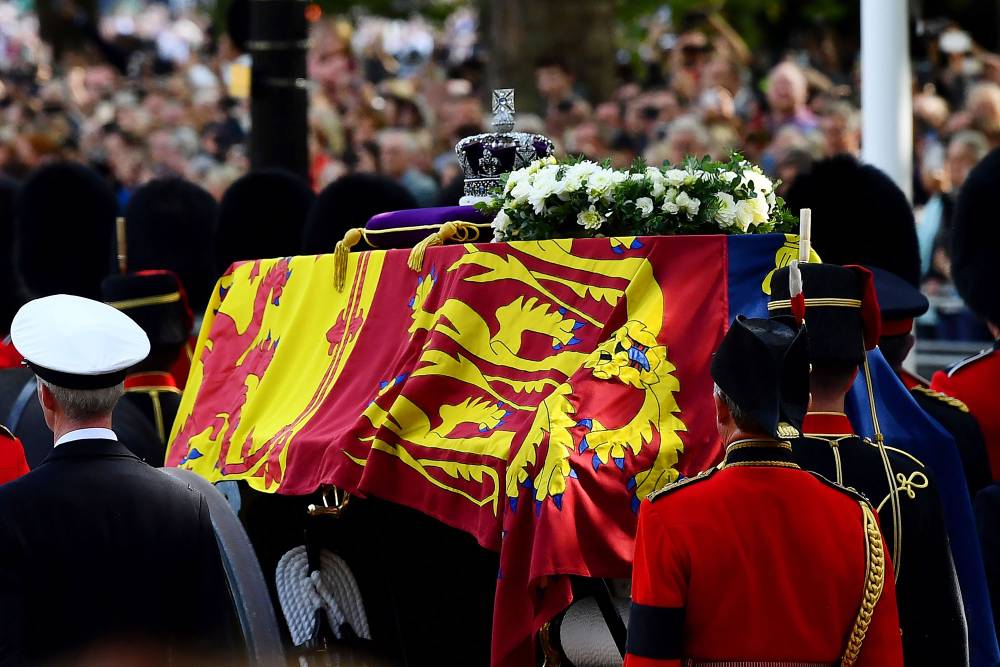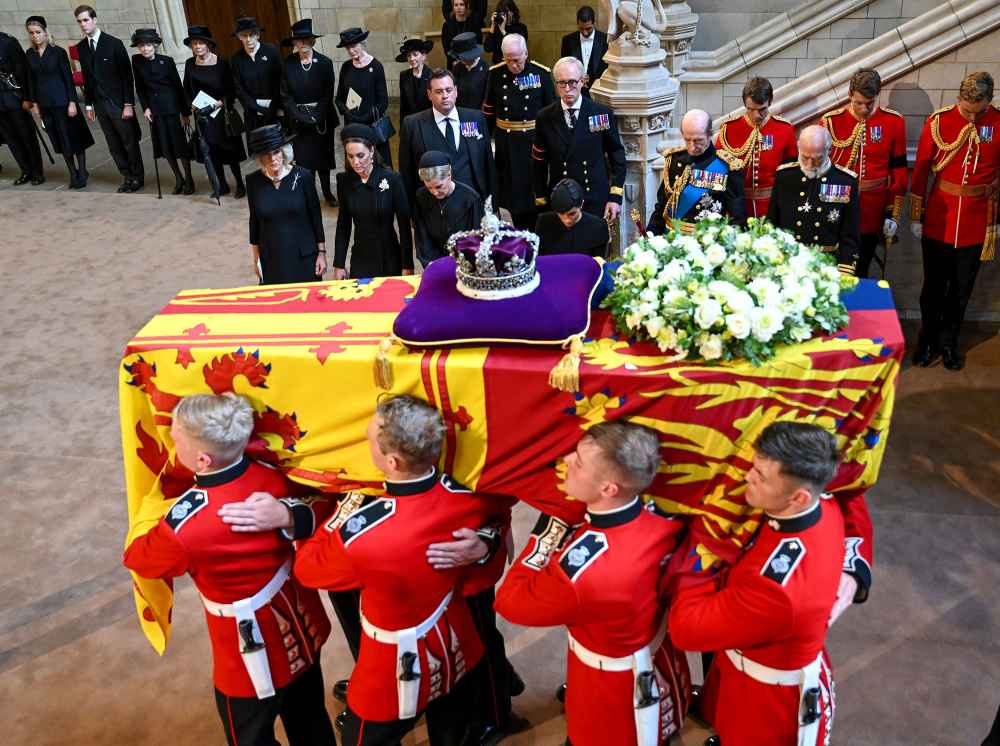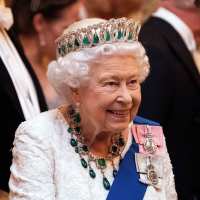
Symbolic artifacts. The late Queen Elizabeth II will lie in state at Westminster Hall from Wednesday, September 14, until her funeral on Monday, September, 19 — and her closed coffin will be adorned with items from the royal family’s Crown Jewel collection.
The Sovereign’s Orb and the Sovereign’s Sceptre With Cross will be placed on top of the casket. The orb is presented to British monarchs during their coronation. Dating back to Charles II’s coronation in 1661, the piece of regalia is golden and has a cross perched on top to symbolize heavenly power over the world. It is mounted with emeralds, rubies, sapphires, diamonds, pearls and one amethyst.
The orb has been used for every royal coronation since its creation and is expected to be held by King Charles III during his official crowning. Elizabeth’s coronation took place on June 2, 1953, making her 70-year reign the longest in the history of the United Kingdom.
The Sceptre is also a part of coronation regalia, with the same 1661 origins. Unlike the religious symbolism of the orb, the three-foot-long staff represents the monarch’s power in the secular world. The sceptre holds a piece of the world’s largest diamond, the Cullinan I, also known as the First Star of Africa. The diamond was mounted on the baton in 1910.
In addition to the orb and sceptre, the monarch’s coffin will also be adorned with the State Crown, worn by rulers after their coronations and used at the State Openings of parliament.
The queen’s state funeral will take place on Monday, 10 days after her death at age 96 on Thursday, September 8. The service will take place at Westminster Abbey. Afterward, Her Majesty’s remains will be taken to Wellington Arch and then to her final resting place at Windsor. For two minutes at midday on Monday, there will be a nationwide moment of silence after Big Ben is struck.

Queen Elizabeth’s eldest son, Charles, became king immediately upon her passing. He will be officially proclaimed the new monarch at a later date. Prince William is now first in line for the throne followed by his three children with Princess Kate — Prince George, 9, Princess Charlotte, 7, and Prince Louis, 4.
Ahead of the queen’s death, she celebrated her historic Platinum Jubilee in February. Celebrations continued in June, but the monarch canceled a handful of appearances as she struggled with mobility issues at the time.
“The Queen greatly enjoyed today’s Birthday Parade and flypast but did experience some discomfort,” a Buckingham Palace statement noted after the annual Trooping the Colour parade.


